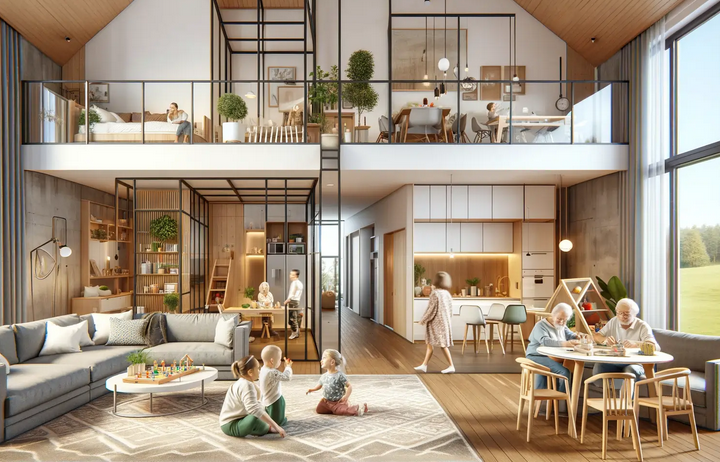Designing homes for multigenerational living requires a thoughtful and inclusive approach to accommodate the diverse needs and lifestyles of multiple generations under one roof. By incorporating adaptable and accessible design elements, architects can create living spaces that promote intergenerational harmony, functionality, and comfort. Here are some key considerations for designing adaptable and inclusive homes for multigenerational living:

Universal Design Principles
Applying universal design principles ensures that living spaces are accessible to people of all ages and abilities. Features such as step-free entrances, wide doorways, lever-style door handles, and zero-threshold showers enhance accessibility and facilitate ease of movement for individuals with varying mobility levels.
Flexible Layouts
Designing homes with flexible floor plans and adaptable living areas allows for versatility in accommodating changing family dynamics. Multi-functional spaces, such as convertible rooms or accessory dwelling units (ADUs), provide autonomy while maintaining proximity and support among family members.
Private and Shared Spaces
Incorporating a balance of private retreats and shared living areas facilitates both independent and communal activities. Ensuring that private enclaves and common gathering spaces coexist allows for privacy when needed while fostering connections and shared experiences.
Aging in Place Features
Integrating aging-in-place features, such as non-slip flooring, well-placed lighting, and grip bars, enables older adults to maintain independence and safety within the home. Additionally, considerations for single-level living and barrier-free access contribute to the long-term usability of the home for aging residents.
Outdoor Accessibility
Creating accessible outdoor spaces with level pathways, handrails, and seating areas ensures that outdoor activities are inclusive and enjoyable for individuals of all ages and mobility levels.
Technology Integration
Incorporating smart home technologies, such as home automation for lighting, climate control, and security, can enhance convenience and safety for all residents, irrespective of age or ability.
Biophilic Design Elements
Integrating biophilic design elements, such as natural light, views of greenery, and indoor plants, promotes well-being and comfort while fostering a connection with nature for all occupants.
Community-Centric Design
Architectural interventions that promote social interaction, such as communal gathering spaces, garden areas, or shared amenities, contribute to a sense of community and cohesion among multigenerational residents.
Safety and Security
Implementing measures to ensure safety and security, such as well-lit exteriors, secure entries, and emergency notification systems, provides peace of mind for all occupants, particularly older adults and young children.
Conclusion
In conclusion, designing adaptable and inclusive homes for multigenerational living involves creating a living environment that supports the diverse and evolving needs of a multi-age household. By incorporating universal design principles, flexibility in layouts, and a focus on accessibility, architects can play a vital role in fostering harmonious and accommodating living spaces for multigenerational households. These considerations contribute to the creation of homes that enhance the well-being, comfort, and sense of community for residents of all ages.